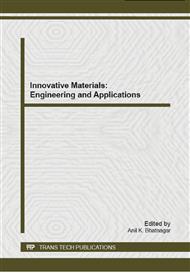p.73
p.79
p.86
p.91
p.97
p.101
p.109
p.115
p.120
Study on Preventing Springback for Nanoporous Thermal Insulating Composites
Abstract:
nanosilica porous thermal insulating composites belong to super thermal insulations, which are prepared by dry molding technology. They have many advantages in comparison with aerogel such as easy preparation and good mechanical property. However, springback phenomenon is found in the process of molding. The springback is easy to lead to cracking of the samples, which directly affects applications of the composites. In order to solve this problem, steam curing method is introduced and the effects of steam curing medium and steam curing time on springback ratio are investigated. The results show that the springback ratio of composites is only 6.45% when water is selected as steam curing medium and the optimum steam curing time is 30 min.
Info:
Periodical:
Pages:
97-100
Citation:
Online since:
October 2014
Authors:
Keywords:
Price:
Сopyright:
© 2014 Trans Tech Publications Ltd. All Rights Reserved
Share:
Citation:


